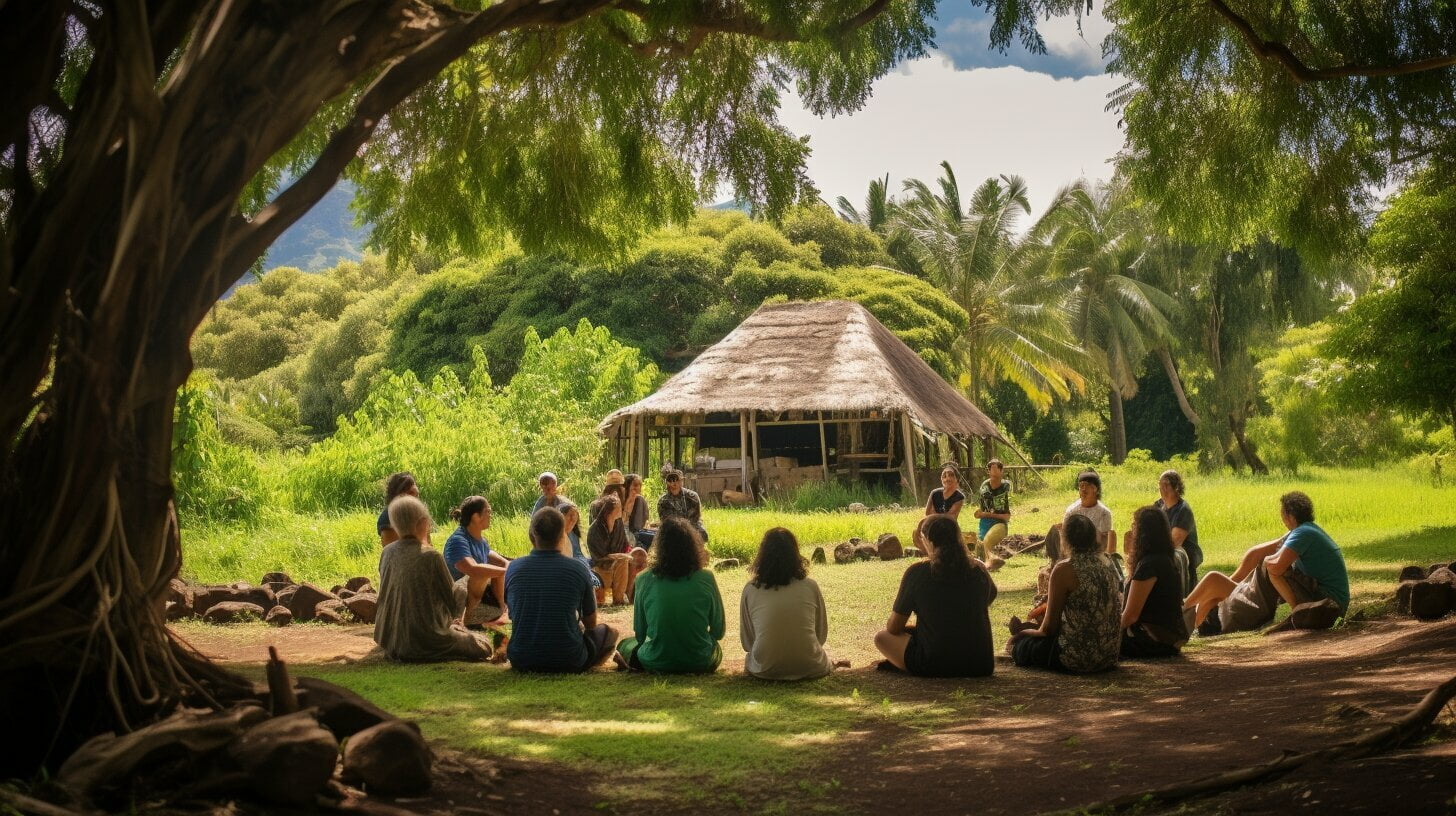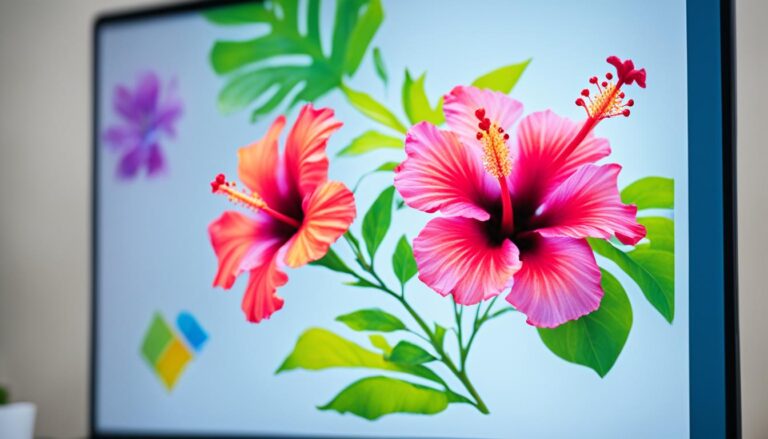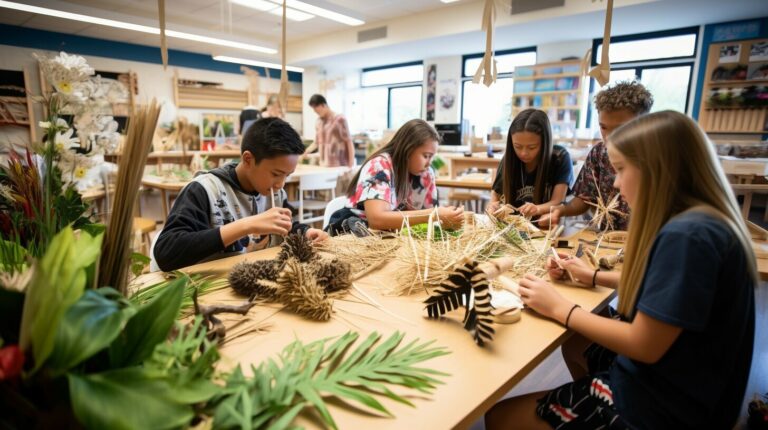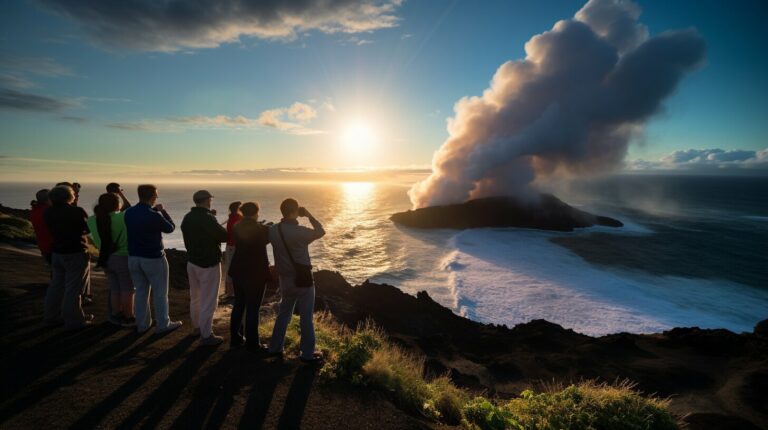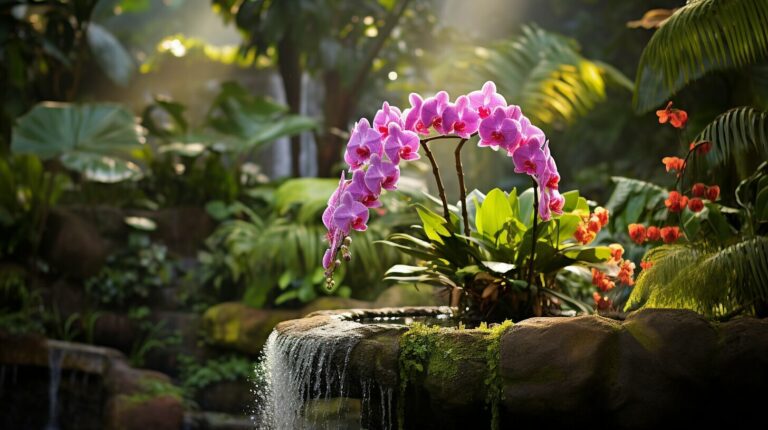Uncover Hawaiian Treasures: Diving into History 🌺
Experience the rich, vibrant past at our Hawaiian History Workshops. Uncover hidden tales and cultural treasures of the islands. Book your spot today!
Key Takeaways:
- Explore the history and culture of Hawaii through our Hawaiian History Workshops
- Learn about the unique aspects of Hawaiian culture and heritage
- Discover hidden stories and treasures from the past
- Engage with experts and scholars in the field of Hawaiian history
- Gain a deeper understanding of the history and significance of the Hawaiian islands
The History Department Workshop
The History Department hosts an ongoing History workshop for talks and presentations by UH faculty and visiting scholars throughout the year. The Workshop provides a platform for scholars to share their research and insights on various aspects of Hawaiian history, offering students and the community an opportunity to engage with these experts in the field.
The workshops take place on Fridays from 2:30 to 4:00 pm in the History Department Seminar Room, Sakamaki Hall A201, unless otherwise noted. The series features a diverse range of topics, allowing attendees to explore and deepen their understanding of Hawaiian history and culture, making it an invaluable resource for those interested in learning more about the rich heritage of the islands.
One notable workshop, titled “The Changing Face of Labor between Japan, Hawai‘i, and Colonial Taiwan,” was presented by Professor Martin Dusinberre from the University of Zurich in February 2019. In this lecture, Professor Dusinberre examined the history of Japanese sugar laborers in Hawai‘i and their impact on the islands’ cultural landscape. Through the analysis of a painting depicting the first Japanese sugar laborers, he explored the complex dynamics and historical memory surrounding their arrival and their subsequent representation in different contexts.
The Changing Face of Labor between Japan, Hawai‘i, and Colonial Taiwan
| Lecturer | Date |
|---|---|
| Professor Martin Dusinberre | February 15, 2019 |
Another fascinating workshop was presented by Professor Carol Gold from the University of Alaska Fairbanks in April 2019. Titled “Dumpster Diving an Archive Box: Cases concerning the Bakers Guild, Copenhagen 1714-1800,” the lecture delved into the stories hidden within an archive box from the Bakers Guild in Copenhagen during the 18th century. Professor Gold showcased the numerous intriguing cases contained within the box, such as bakery fires, engagements, tensions between bakers and millers, and complaints about bread prices, providing a unique glimpse into the history and dynamics of the baking industry at the time.
Dumpster Diving an Archive Box: Cases concerning the Bakers Guild, Copenhagen 1714-1800
| Lecturer | Date |
|---|---|
| Professor Carol Gold | April 5, 2019 |
These workshops are just a few examples of the diverse range of topics covered in the History Department Workshop series. Through these engaging presentations, the workshops provide a valuable resource for individuals interested in delving deeper into Hawaiian history, enhancing their knowledge of the culture and heritage of the islands.
The Changing Face of Labor between Japan, Hawai‘i, and Colonial Taiwan
Professor Martin Dusinberre’s workshop lecture delves into the changing face of labor between Japan, Hawai‘i, and Colonial Taiwan. In his lecture, he analyzes one of the most iconic images of the first Japanese sugar laborers to Hawai‘i, painted by Joseph D. Strong in 1885. This painting, now preserved in a private collection in Tokyo, provides a unique window into the world of transplanted lives in the late-nineteenth century.
Strong’s painting reveals how these Japanese laborers became a contested site of imagination for various constituencies catering to their arrival – including the Japanese government, the Hawaiian king, sugar plantation owners, and the local press. Dusinberre explores the complex layering of historical memory across the traditional historiographical divide of “Asia” and “the Pacific” in the early-twentieth century. He examines how the history of Japanese emigration to Hawai‘i was framed at the turn of the twentieth century and by whom.
Professor Dusinberre, Professor and Chair for Global History at the University of Zurich, has dedicated his research to Japan and the Pacific world in the nineteenth and twentieth centuries. His expertise lies in the history of Japanese imperialism, overseas migration, and maritime trade. This workshop lecture is part of the ongoing History Department workshop series, which offers a platform for faculty and visiting scholars to share their research on Hawaiian history.
To provide a better understanding of the changing face of labor in Hawaii, it is essential to explore the historical context of Japanese sugar laborers and their impact. The knowledge gained from Professor Dusinberre’s lecture will contribute to a broader understanding of Hawaii’s cultural landscape and the intricate connections between Japan, Hawai‘i, and Colonial Taiwan.
Examination of the Bakers Guild in Copenhagen
Professor Carol Gold’s workshop lecture takes attendees on a dumpster diving journey into the history of the Bakers Guild in Copenhagen. By exploring a box from the Copenhagen City Archives, Gold delves into the stories and dynamics hidden within this archive from the 18th century.
The lecture uncovers intriguing tales of the bakers’ struggles, tensions, and disputes. For instance, one story revolves around Christian Lentz, whose bakery burnt down in 1749. Despite applying for permission to build a new bakery, Lentz faced financial challenges and was unable to fulfill his plans. Another narrative highlights the ongoing tension between the bakers and the millers, with accusations of favoritism towards the distillers’ grain over the bakers’ grain.
Furthermore, the lecture sheds light on the city’s regulations at the time. Every six months, the city established the size of bread loaves to be sold at specific prices. However, the bakers frequently voiced their dissatisfaction, claiming that they could not make a profit under these official prices.
Dumpster Diving in the Copenhagen City Archives
“Generally, when we do research, we start with questions and look for answers. I have turned this process on its head and started with answers—a somewhat randomly chosen box from the Copenhagen City Archives—and looked for questions. The box contains items sent from the Bakers Guild to the Copenhagen city authorities during the eighteenth century. What stories are hidden in the box?”
Professor Carol Gold’s lecture not only presents an intriguing exploration of the Bakers Guild in Copenhagen but also offers insights into the process of historical research. By starting with answers, Gold challenges conventional research methods and invites attendees to discover the stories and hidden narratives within the archive box from the Bakers Guild. Through her unconventional approach, she highlights the fascinating dynamics and tales of the bakers’ lives and struggles in 18th-century Copenhagen.
Mobility and Migration in the Early Modern Mediterranean
Eric Dursteler’s workshop lecture sheds light on the complex dynamics of mobility and migration in the early modern Mediterranean. The Mediterranean has long been recognized as a major crossroads of human movement, with tens of millions of people migrating to and through the region throughout history. However, traditional scholarship often portrayed the Mediterranean as a barrier to movement rather than a facilitator.
Recent research challenges this perception, revealing that Mediterranean peoples were highly mobile and that the sea served as a liquid landscape that enabled, rather than hindered, movement. Dursteler’s lecture explores the motivations and mechanics of Mediterranean mobility in the early modern era, including labor mobility related to trade, shipping, agriculture, fishing, and soldiering. Natural occurrences such as drought, famine, disease, and earthquakes also drove many migrants, while political and military events influenced migration patterns.
This lecture highlights the fluidity and interconnectedness of Mediterranean societies during this period. It underscores the region’s rich history of migration and mobility, emphasizing the important role they played in shaping the Mediterranean’s collective mentality and identity. By understanding the historical dynamics underlying people’s geographic mobility and immobility in the early modern Mediterranean, we can gain greater insight into the complexities of human migration and its impact on the region.
Mobility and Migration in the Early Modern Mediterranean Table
| Primary Impetus | Motivations |
|---|---|
| Labor Mobility | Trade, shipping, agriculture, pastoralism, fishing, soldiering |
| Natural Occurrences | Drought, famine, disease, earthquake |
| Political and Military Events | Influence migration patterns |
In summary, Eric Dursteler’s workshop lecture provides valuable insights into the history of mobility and migration in the early modern Mediterranean. It challenges the traditional perception of the Mediterranean as a barrier to movement and highlights the interconnectedness of Mediterranean societies during this era. By understanding the motivations and mechanics of Mediterranean mobility, we can gain a deeper appreciation for the historical dynamics that shaped the region.
Native Hawaiian Perspectives in Hawaiian Studies Courses
Hawaiian Studies courses offer students the opportunity to explore the unique aspects of the native Hawaiian point of view in regards to language, religion, art, and history. These courses provide a comprehensive understanding of the rich cultural heritage and traditions of the Hawaiian people, allowing students to gain insights into the values and perspectives that shape Hawaiian society.
One of the key focuses of Hawaiian Studies courses is the exploration of the Hawaiian language, which plays a vital role in preserving and reviving the native culture. Students learn basic speech patterns, vocabulary, and grammar, enabling them to engage in basic conversations in Hawaiian. The language holds deep historical and cultural significance, serving as a connection to the past and a means of expressing the unique worldview of the Hawaiian people.
In addition to language, Hawaiian Studies courses delve into the intricacies of Hawaiian religion, including the belief systems, gods, and spiritual practices of the ancient Hawaiians. This allows students to gain a deeper understanding of the spiritual foundation upon which Hawaiian culture is built.
Course Examples:
| Course | Description |
|---|---|
| Hawaiian Art | Introduction to a variety of material and skills used in Hawaiian art, focusing on cultivation, preparation, uses, and conservation of traditional materials. |
| Hawaiian Language | An in-depth study of the Hawaiian language, including speech patterns, vocabulary, and grammar, with the goal of developing conversational skills. |
| Hawaiian Visual Culture | Research and expression of personal relationships to specific Hawaiian paradigms through visual culture, exploring various materials, techniques, and styles. |
Furthermore, these courses shed light on the history of the Hawaiian people, from their origins and migration patterns to the socio-political development of the islands. Students gain insights into the impacts of colonization, Western influences, and the efforts of native Hawaiians to reclaim their cultural identity in the face of adversity.
By engaging in Hawaiian Studies courses, students develop a deep appreciation for the native Hawaiian perspective, fostering cultural understanding and the preservation of Hawaiian heritage for future generations.
Introduction to Hawaiian Language and Culture Classes
Hawaiian language and culture classes provide students with the opportunity to gain a deeper understanding of the Hawaiian language, culture, and values. These classes offer a unique perspective on the history and traditions of the native Hawaiian people, highlighting their origins, language, religion, land, art, history, and modern issues. By studying the Hawaiian language and immersing themselves in the culture, students develop a profound appreciation for the rich heritage of Hawaii and the significance of its indigenous people.
In these classes, students explore various aspects of Hawaiian culture and gain hands-on experience in traditional practices. They have the chance to learn about the ancient ahupua‘a system, which was conceptualized by the ancient Hawaiians and examines the interdependence of land, sea, and communities. Students also have the opportunity to study and work with different materials, such as fibers, bones, wood, and stone, used in Hawaiian art and craftsmanship.
Furthermore, these classes provide students with a platform to express their personal relationship to specific Hawaiian paradigms through visual culture. They learn about Hawaiian painting and drawing techniques and explore various materials and techniques to create their own works of art. Students also delve into the world of printmaking and gain a deeper understanding of Native Hawaiian perspective and world view through print imagery.
Hawaiian Language and Culture Classes Offered:
| Class | Description |
|---|---|
| Hawaiian History Grade 11 (semester) | In-depth study of the history and culture of the Hawaiian people, with focus on their past, present, and future as it shaped their individual and collective realities. |
| Geography and History of Hawaii Grade 9 (year) | Examines the geography and human makeup of Hawai’i, as well as the causes and changes of the transformation of the area. Includes units on the political, economic, and social history of Hawai‘i. |
| Hawaiian Studies 06 | Introductory course to Hawaiian Studies that instills an appreciation for the Hawaiian culture and people while developing a sense of place for where we live in Hawai‘i. |
| Hui O Nā ‘Ōpio 7 Intro Grade 7 (year) | Students study the Hawaiian language and culture through oli (chant), mele (song), and hula (dance), perpetuating cultural traditions. |
| Hui O Nā ‘Ōpio II ** Grade 10 (year) | Continuation of Hui O Nā ‘Ōpio I, with added emphasis on proficiency in theory, practice, and performance of oli, mele, and hula. |
| Hawaiian I Grades 9-12 (year) | An introduction to the basic speech patterns, vocabulary, and culture of the Hawaiian language. In this course, students develop skills in listening, comprehending, speaking, reading, and writing Hawaiian. |
Through these Hawaiian language and culture classes, students gain a deep appreciation for the language, culture, and values of the native Hawaiian people. These courses play a crucial role in preserving and promoting Hawaiian heritage and ensuring that future generations continue to embrace and honor the rich traditions of Hawaii.
Conclusion
By participating in Hawaiian History Workshops, individuals can gain a deeper understanding of Hawaiian history, culture, and heritage, fostering a sense of appreciation and connection to the islands and its people.
Hawaiian History Workshops offer a unique opportunity to learn about the rich history and cultural heritage of Hawaii. Through talks, presentations, and interactive sessions, participants can explore various aspects of Hawaiian history, including the impact of Japanese sugar laborers, the dynamics of the Bakers Guild in Copenhagen, and the patterns of mobility and migration in the early modern Mediterranean. These workshops provide a platform for renowned scholars and experts to share their knowledge and insights, allowing attendees to delve into the complexities and intricacies of Hawaiian history.
In addition to the academic workshops, Hawaiian Studies courses and Hawaiian language and culture classes play a vital role in providing a comprehensive understanding of the native Hawaiian perspective. These courses offer a deeper exploration of Hawaiian values, language, art, and traditions, providing students with a holistic framework for appreciating the unique cultural identity of Hawaii. By immersing themselves in the Hawaiian language and culture, individuals can develop a deeper connection with the land, history, and people of Hawaii.
Understanding Hawaiian history and heritage is crucial for preserving and promoting the rich cultural legacy of Hawaii. It allows individuals to become active participants in preserving and sharing the stories, traditions, and values that have shaped the Hawaiian identity. By engaging in Hawaiian History Workshops and educational opportunities, individuals can contribute to the continued appreciation and celebration of Hawaiian history and culture, ensuring that future generations have the opportunity to learn, cherish, and protect the Hawaiian heritage.
FAQ
Q: What are the Hawaiian History Workshops?
A: The Hawaiian History Workshops are a series of talks and presentations hosted by the History Department at the University of Hawaii. These workshops provide an opportunity for faculty, scholars, and graduate students to share their research and knowledge about various aspects of Hawaiian history and culture.
Q: Who can attend the History Department workshops?
A: The History Department workshops are open to the public, including students, faculty, and community members who have an interest in learning about Hawaiian history and culture.
Q: When and where do the History Department workshops take place?
A: The workshops usually take place on Fridays from 2:30 to 4:00 pm in the History Department Seminar Room, Sakamaki Hall A201, unless otherwise noted. It is recommended to check the department’s website for any changes in schedule or location.
Q: What topics are covered in the History Department workshops?
A: The workshops cover a wide range of topics related to Hawaiian history and culture. Some examples include the changing face of labor between Japan, Hawaii, and colonial Taiwan, examination of the Bakers Guild in Copenhagen, and mobility and migration in the early modern Mediterranean.
Q: How can I learn more about Hawaiian history and culture?
A: Apart from attending the History Department workshops, you can also explore other resources such as Hawaiian Studies classes, language and culture classes, and literature and art focused on Hawaiian culture. Additionally, visiting Hawaiian cultural sites, reading books and articles, and engaging with the local community can provide valuable insights into Hawaiian history and culture.

